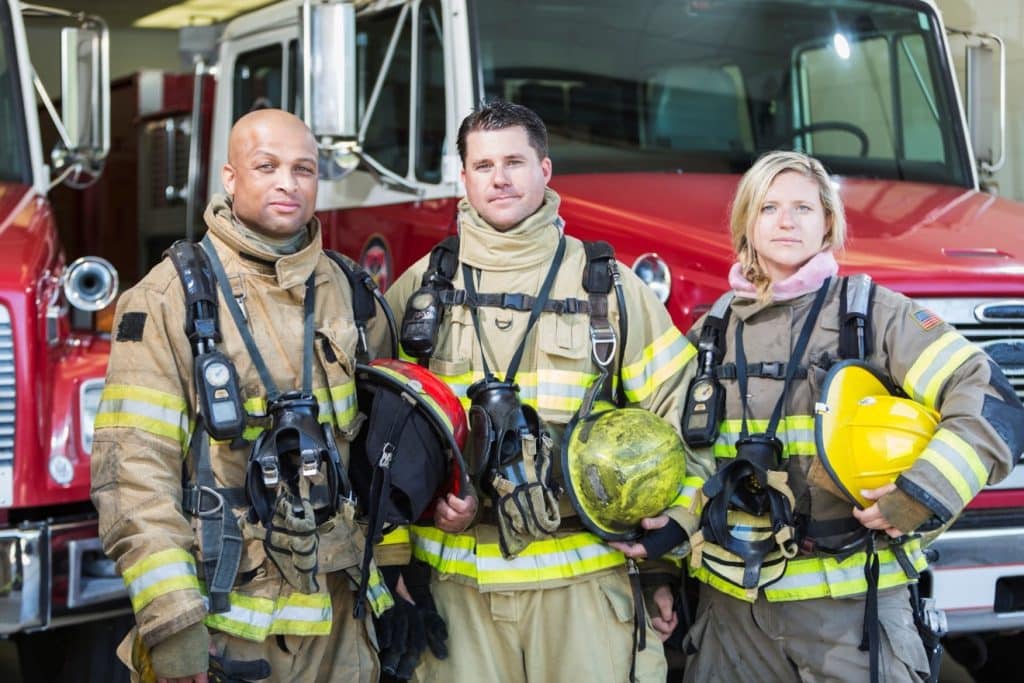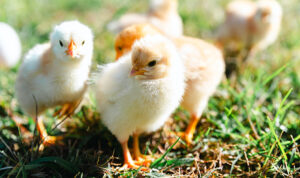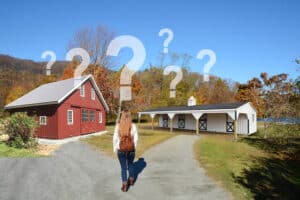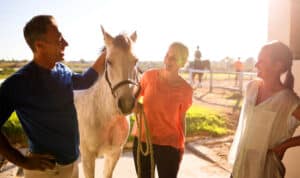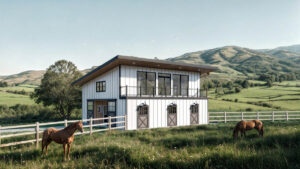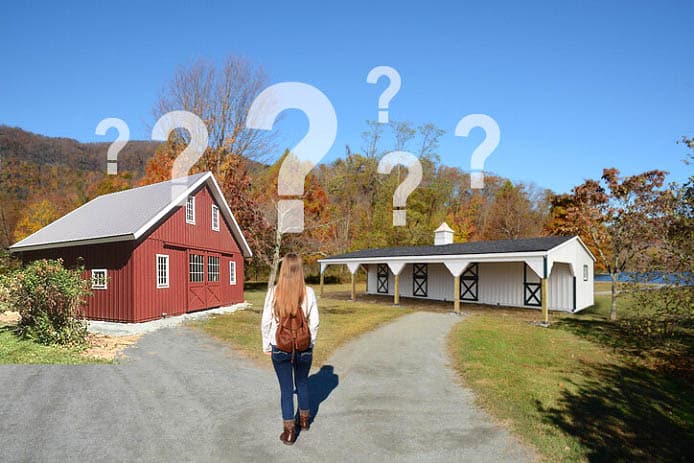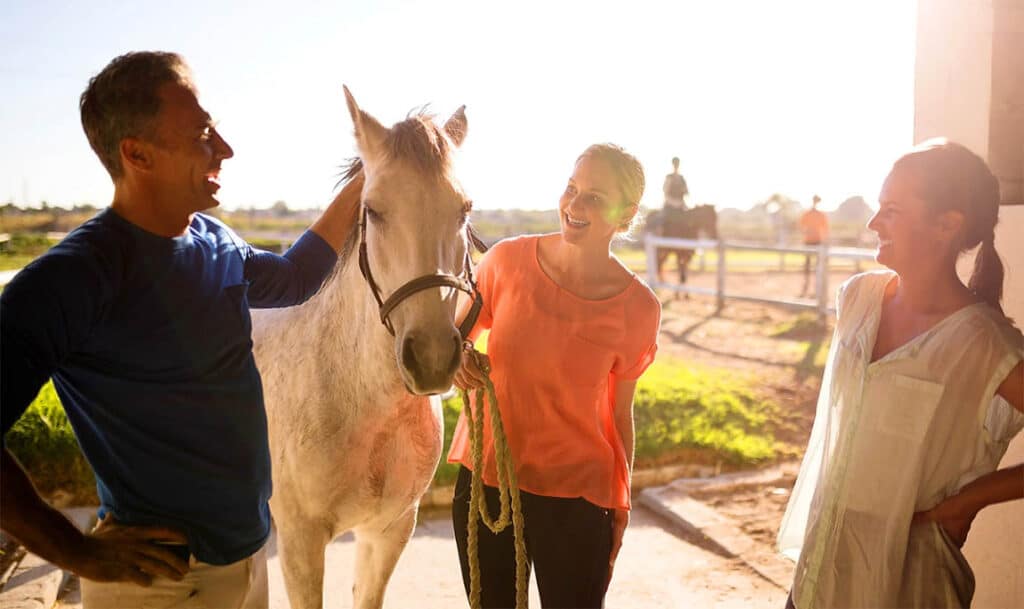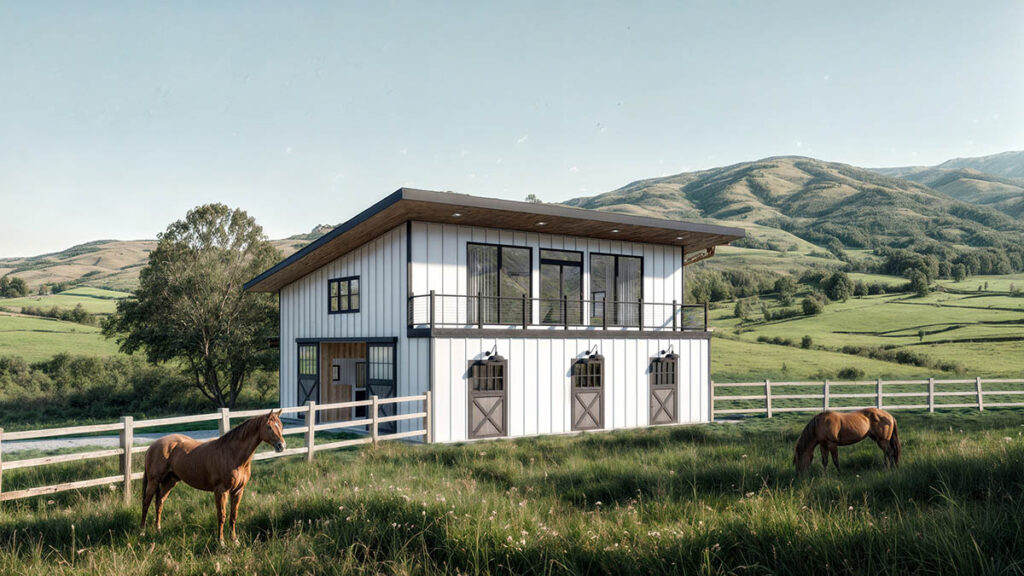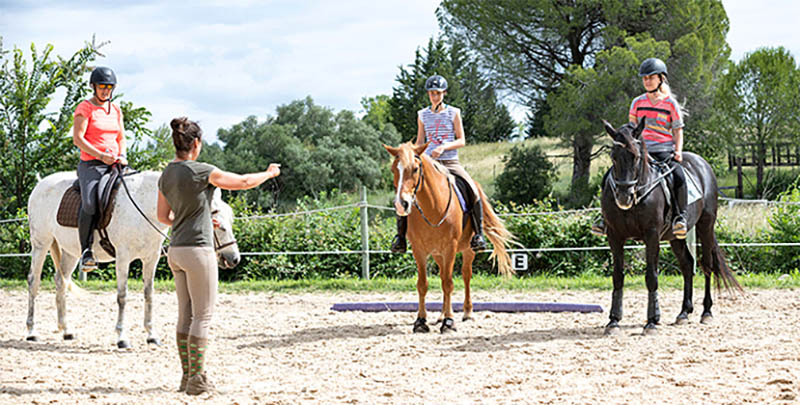No horse farm owner wants to play around with fire. Sadly, every year horses and humans die in fires, and property and equipment is damaged or destroyed. A farm is a high-risk environment for fires, but simple routines and proactive measures can mitigate that risk. Many times devastating fire events could have been avoided.
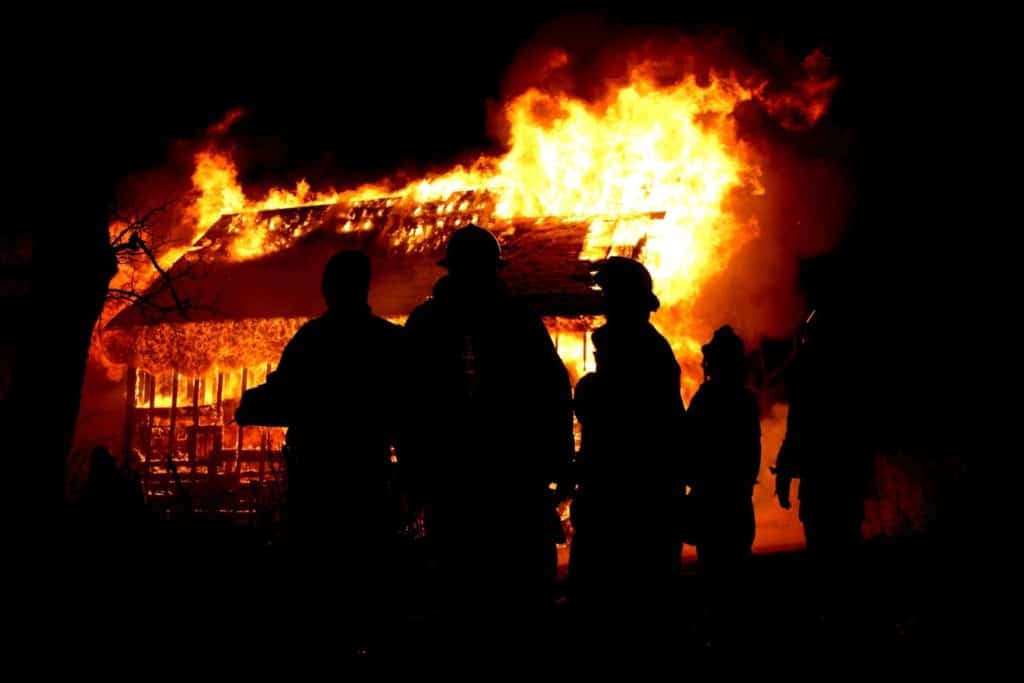
Advice on fire safety practices on the horse farm will often encompass areas of common concern such as moisture content of hay and its storage, provision of evacuation plans and emergency services contact numbers, 24/7 illuminated exit signs, smoke alarms, fire extinguishers, removal of cobwebs from light fixtures, no smoking signs, keeping the barn aisle free of obstacles and all wiring protected from vermin and the reach of inquisitive equine noses.
While putting all the above advice into action is a must, there are other fire ‘starters’ that are often overlooked. For example, did you know that arcing of batteries in equipment such as tractors is a leading cause of farm fires? Electrical arcs can reach 10,000 degrees Fahrenheit.
Why are buildings in the farm environment are generally considered at higher risk of fire than a residence?
This is because where animals are houses the humidity is generally high and there are certain gases present in the atmosphere such as ammonia and hydrogen sulphate that are corrosive. When electric current is applied in a barn, either on a piece of equipment or through the electric wiring circuit servicing the building’s needs, they are thus subject to the negative corrosive forces of this environment. Extra safety steps can make all the difference in mitigating the level of fire risk.
Here are some helpful farm safety practices and protocols that you may want to add to your fire prevention list.
- Remove batteries from equipment when storing it for long periods of time. Especially tractors and larger vehicles. Store batteries in a warm, dry location away from cold temperatures to extend battery life.
- Empty the hay baler of all hay before putting it away in a building. Hay that sweats up in the baler not only causes paint damage and rust to the machine it also presents a fire hazard.
- Avoid plugging motorized equipment into outlets in the barn or hay storage area. Some examples: electric charged golf carts, diesel engines that require block heaters to be plugged in for cold winter starts.
- Be careful where holiday decorations are placed to avoid locations of a flammable nature such hay storage areas, dry wood walls, or areas of likely cobwebs and insect/vermin issues. Ensure that the quality of the wires is UL graded for exterior use. A barn may be thought of as an interior space but usually the humidity caused by the livestock housed within combined with the fact most barns are unheated spaces creates condensation and moisture and is considered an exterior environment from the electrical standpoint.
- Unplug small appliances such as coffee makers, microwave ovens and toasters when not in use. Horse equipment such as plug in hay steamers should always be carefully monitored to ensure they are not dry of water as a fire may result. Ideally these units should not be left plugged in without supervision.
- Ensure all outlets are fitted with GFCI for additional protection of users of electrical circuits. Install AFCI where recommended by a licensed electrician. Although annoyingly sensitive to electric current fluctuations AFCI installation can readily detect issues in the circuit before a fire ensues.
- Ensure all breakers and circuits are up to electrical code requirements and breaker box is easily accessible and do not overload circuits. A breaker switching off automatically is your warning that the circuit is not functioning safely.

As mentioned above barns and farm buildings are at higher risk of fire than homes due to the housing of livestock and humidity and corrosive gases produced by the presence of animals. Corrosion of copper and brass in wire can produce a localized heat that may eventually result in spontaneous ignition of surrounding materials. Corrosion and rodent damage can also leave wires exposed that may cause arcing/ sparking when an electrical current is applied, setting on fire flammable components nearby.
- Extension wires that service tank water heaters and electric fences should be protected from damage from snow plowing equipment and heavy tractor tires. Avoid placing electrical extension wires anywhere a shod horse’s foot could impact it or trip over it. Cover of temporary use extension wires with rubber mats to avoid the tripping hazard is common, but these should be periodically checked to ensure there is no damage or wear to the wire beneath and this method should not be considered a permanent solution to an electrical outlet need closer to the area of use. Consider solar powered options for power where possible e.g. fence chargers.
- Steel fire doors versus wood, should be installed in offices/bathrooms/tack rooms etc. The addition of automatic door closures can provide another layer of protection for areas at high risk for fire such as feed rooms and barn kitchens/offices. The automatic door closer will help prevent vermin from finding their way inside these spaces and save the need for opening and closing doors by hand when often your hands are full of buckets or tack and equipment.
- Never use any open flame in a building. This may seem obvious but sadly rocket heaters stuck at the end of an aisleway, or kerosene heaters in feed rooms and the use of generators in the interior of a building are all too often utilized by farm owners resulting in fire.
- Lightning is more likely to strike a taller building than a diminutive neighbor, and farm structures are often much taller than other buildings on the property. It is a myth that metal buildings are more likely to be struck by lightning than wood buildings, but it is a good idea to seek professional advice regarding grounding rods and lighting protection for tall buildings in exposed locations. Removal of large trees that may be struck by lightning and fall on the roof of a farm building should be considered as an additional preventative measure.
- Transformers atop telegraph poles that transfer power from one circuit to another on the street should not be located close to structures on the property as they are at more risk of being struck by lightning than poles without transformers. Consult your electric power company for advice. Requests for transformers be moved and sited distant from the barn if they are currently close by are usually honored without cost to the property owner.
- In regions at high fire risk the common cause of fire is hot embers igniting roofs and surrounding brush or shrubs around the perimeter of the buildings. Choosing a fire-resistant roof material when building the barn can help mitigate the fire risk. Removing shrubs and debris, trees, and other flammable materials from the immediate area of the horse barn can help alleviate the fire risk further. If viable add a high-power water source nearby the building that can be utilized in case of the need to wash down the structure during a fire event to help defray the ember ignition risk. A swimming pool can make a handy water source option if the right attachments are installed at the pump in case of need.
- Ensure that your property is well lit and easy to find during nighttime hours. Driveway lights at gates and clear and illuminated signage detailing your street number and farm name can save valuable time for the fire department if called out to your property in an emergency.
While accidents can happen taking safety precautions seriously is a solution to minimize the risk of fire. Don’t forget to keep your driveway and access to the barn clear of snow and easily accessible for emergency equipment too and your street address well signed at the roadside to ensure your property is easy to locate.
One of your best resources for advice is your local fire department. Invite their staff over to inspect your premises and offer suggestions for improving your fire safety practices. Perhaps at the same time offer their team a lesson in safe handling of horses, and don’t forget the monetary donation if they are a volunteer unit.
If you are in the planning stages of constructing a new barn, it is prudent to address the fire risk concerns during the initial phases to make daily use of the structure as safe as possible. While every contingency cannot be covered as future needs may not be known, adding extra exterior and interior properly installed outlets and designing special storage areas for flammable equipment and supplies is something you’ll never regret.
Such measures can also save you money on insurance costs each year. For example, fiberglass shingles on a roof rate better than asphalt in fire safety so premiums may be lower for the former, while metal roofs may be rated lower than shingle roofs from an insurance perspective.


